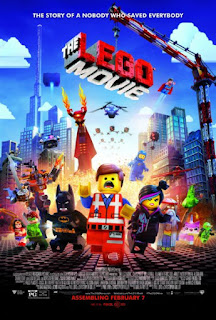Film Review - Robert Wiene's "The Cabinet of Dr. Caligari" (1920)
Fig. 1 - The Cabinet of Dr. Caligari Movie Poster
The film portrays that of a psychological theme, touching into the horror genre, displaying what is now known as the first “classic twist” towards the end of the film, which would be assumed as rather disturbing within the 1920’s. The ending could have caused the audience to question themselves, second guessing their own choices in what they thought they knew. The dramatised expressions and the dance-like movements displayed by the actors emphasises the impact of the situation within the scene. For example, as Cesare carries Jane away over many jagged terrains, the villagers become this sort of mad, bustling mob with flailing arms and quick paced movements.
The camera shots were vital to setting the scene, so to speak. “Wiene is fond of the iris shot, which opens or closes upon a scene like an eye.” Due to this artistic direction, the opening and closing of the ‘eye’ conveys that the audience is blinking into the next scene, the catch being that they have a sense what is going on whereas the characters may not, like an exclusive secret that is about to be revealed. Wiene would also tend to create close up shots of each characters, allowing the audience to decipher the character, and see them for who they are.
Fig. 3 - Cesare creeping through the streets at night
Although Wiene’s “Caligari” may not be the most extravagant of affairs, it is certainly a memorable one. “Not only does provide an engaging visual experience, unlike any other, it offers something few other films can – the background and foundation to better understand and appreciate those films that followed in its footsteps.” To what is stated to be the origin of horror itself, Robert Wiene’s, The Cabinet of Dr. Caligari certainly set an impression upon it’s viewing audience, not only surprising us with the extensive artistic background and tremendous effort put towards production, but it differs from other films, showing how collaboration between art and film can become a masterpiece within itself.
Bibliography:
Ebert, R (June 3rd, 2009) http://www.rogerebert.com/reviews/great-movie-the-cabinet-of-dr-caligari-1920 (Accessed on 26/09/14)
Merriam, J (October 13th, 2008) http://classic-horror.com/reviews/cabinet_of_dr_caligari_1920 (Accessed on 26/09/14)
Images:
Fig. 1 - Wiene, R, http://www.imdb.com/media/rm4144485376/tt0010323?ref_=tt_ov_i# (Accessed on 26/09/14)
Fig. 2 - Wiene, R, http://www.imdb.com/media/rm2013577472/tt0010323?ref_=ttmi_mi_all_sf_7 (Accessed on 26/09/14)
Fig. 3 - Wiene, R, http://www.imdb.com/media/rm1124385024/tt0010323?ref_=ttmi_mi_all_sf_5 (Accessed on 26/09/14)
Images:
Fig. 1 - Wiene, R, http://www.imdb.com/media/rm4144485376/tt0010323?ref_=tt_ov_i# (Accessed on 26/09/14)
Fig. 2 - Wiene, R, http://www.imdb.com/media/rm2013577472/tt0010323?ref_=ttmi_mi_all_sf_7 (Accessed on 26/09/14)
Fig. 3 - Wiene, R, http://www.imdb.com/media/rm1124385024/tt0010323?ref_=ttmi_mi_all_sf_5 (Accessed on 26/09/14)






Hi Chelsea, I must say it is a good first attempt to the review.
ReplyDeleteJust a few technical things you have to take note.
1)Your quotes have to be in italics.
2) You have to use at least 3 different sources (I think it is stated in the brief)
3) You have to use Harvard Style referencing for your Bibliography and Illustrations.
It can be found here:
Bibliography: http://community.ucreative.ac.uk/article/36657/Referencing-text-sources-using-the-Harvard-style
Illustrations:
http://community.ucreative.ac.uk/article/36658/Referencing-image-sources-using-the-Harvard-style
4) To ensure that your review looks more professional, have your blog post to be justified instead of centralised.
Hope this helps to make your next review a better one in terms of the structure of it :)
Thank you so much for the advice given, it's really needed here! I think I was a little anxious because I had never written a review before, and I wasn't entirely sure as to what to include. BUT I will definitely do better next time, so hopefully everyone will enjoy reading my next review.
DeleteThanks again Ayunie! :D
Ah, Ayunie has beaten me to it!
ReplyDeleteYes indeed - well done Chelsea, you have put a lot of thought into this review.
I would agree with everything that Ayunie has said above, and would also add that you should try and introduce and then 'unpick' your quote, so that it is not just sitting there as a thing in its own right. I'm not sure which quote is attributed to which author above, but as an example, you could say,
'As Roger Ebert explains in his review, '...blah blah...' (Ebert,2009)and from this it could be said that....'
Looking forward to reading the next review! :)
Hey Jackie, thank you for leaving a comment on my review, the feedback is much appreciated! Hopefully I will do better in my next review, so watch this space for future posts!
ReplyDeleteThanks again, you've really helped me out! :D